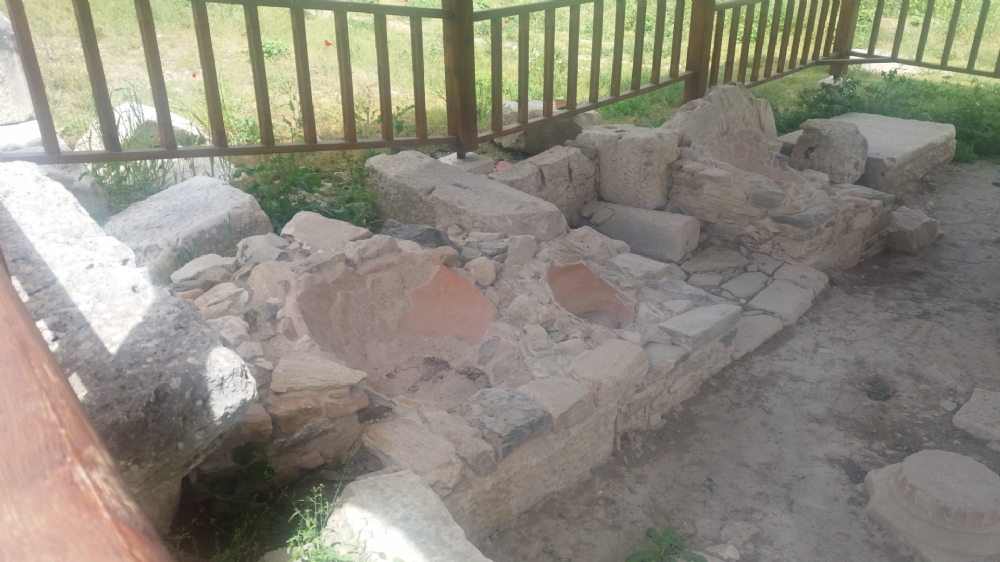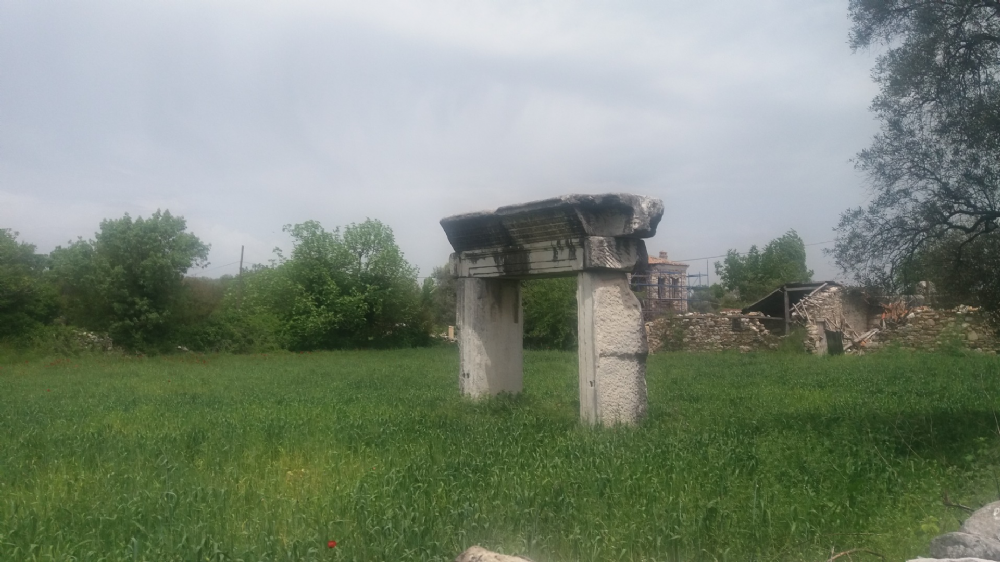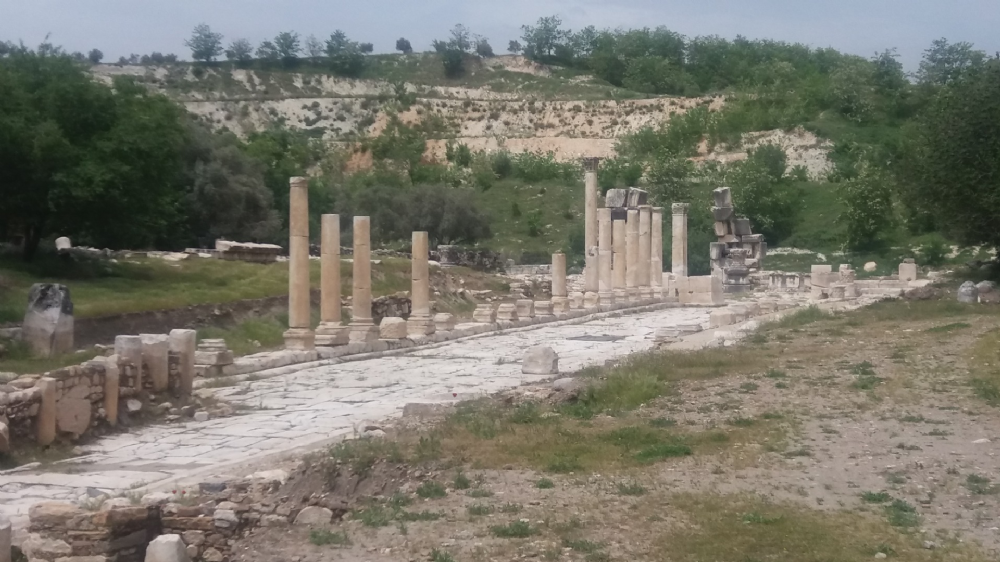South West Turkey Tour
 Initial region
Antalya
Initial region
Antalya
 Duration
15 Days
Duration
15 Days
 Language
English
Language
English
 Price
€ 2.150 / person
Price
€ 2.150 / person
Antalya
Perge
Sagalassos
Pamukkale
Aphrodisias
Ephesus
Dalyan
Oinoanda
Arykanda
Chimera
DAY 1 – Arrival to Antalya Airport Transfer to Hotel Kaleici
Airport Transfer to Antalya city centre. We visit the atmospheric old town, or 'Kaleici', district. Narrow streets of restored Ottoman-era houses open out onto pretty courtyards, and historic architecture abounds. In early arrival, today is free day left to you to visit the columned Hadrian's Gate, a fantastically preserved Roman archway, Alaaddin Moque which was an 18th centry Greek church. Yivli Minaret which is symbol of town, Etnografy museum. Some of the city's best restaurants and bars are found in this area, perfect for your first night relaxing in the Mediterranean.
ACCOMMODATION:
Puding Marina Hotel
DAY 2 – Archeological tour to the ancient city of Perge and the Roman amphitheatre of Aspendos
We drive 30 minutes from hotel to Perge and Aspendos we visit here numerous ruins from Hellenistic and Roman period. Roman theatre, built in Aspendos in the reign of Marcus Aurelius in the 2nd century AD. spectacularly well-preserved, the intact theatre holds approximately 15,000 spectators, who would once have crammed onto the stone seating for gladiator and animal shows. Roman baths, a stadium, theatre and impressive colonnaded streets that give an idea of what city life may have been like. Many of the finds at this site, including an array of Roman statues and sarcophagi in excellent condition, can now be found at the Antalya Archeological Museum. After some, we'll drive back to Antalya. For those who wish, we visit Antalya museum - one of Turkey's largest, it contains an impressive collection of pieces that track ancient Anatolia's history from the Stone Age through the Romans, the Byzantine era and the Ottoman Empire.
ACCOMMODATION:
Puding Marina Hotel
MEALS PROVIDED: B-L
DAY 3 - Drive to Burdur via site of Sagalassos and the Insuyu Caves
Leaving the coast this morning,we drive to one of Turkey's hidden gems; the ancient city of Sagalassos. Visiting ancient sites will become a theme of this trip, as we explore Turkey's fascinating and varied history from Alexander the Great to the Ottomans. However, there is something truly special about a site with a view, and Sagalassos tops the list. Perched on a steep mountain slope, overlooking an endless chain of peaks stretching out into the distance, we'll find Roman columns stretching up into the sky, the remains of finely carved walls and sculptures tumbling down the mountainside, and a theatre with one of the best views in Turkey. Special mention should be made of the 'Nymphaeum' - an elaborately decorated fountain, constructed in the late 100s AD. It was recently restored to full working order and is the site's stunning centrepiece.
We visit Insuyu Caves, an underground network with millions of stalagmites and stalactites that formed thousands of years ago.
ACCOMMODATION: Barida Hotel
MEALS PROVIDED: B – L -D
DAY 4 - Drive to Pamukkale; visit Hierapolis and the Pamukkale cascades
Burdur is known as the City of Lakes, and as we set off this morning we'll make a stop at Lake Salda, an hour outside the city. This lake is known as the 'Turkish Maldives', for the bright turquoise blue of the lake and the surrounding white sandy beach.
Today we explore one of Turkey's most amazing natural wonders. Known as the 'cotton castle,' Pamukkale's terraced thermal pools are toothpaste-blue, with white calcareous deposits that give a cloud-like cotton wool effect.
We visit the ancient Roman spa town of Hierapolis, where we will find ruins dating back to 2nd century BC. Earthquakes have rocked the area throughout history and the site was finally abandoned in 1334 following a particularly strong quake. We will visit the theatre, Temple of Apollo, Frontinus Gate and see a number of sarcophagi, and you may have the chance to go into the Archaeology Museum housed in the former Roman baths.
There is the option to swim in the incredible travertine pools of Pamukkale.
ACCOMMODATION:
Venus Hotel
MEALS PROVIDED: B-D
DAY 5 - Visit the Greco-Roman site of Aphrodisias; drive Selcuk
Today we visit the impressive Greco-Roman site of Aphrodisias, where the goddess of love, Aphrodite, once bestowed sensual favours on her willing devotees. Its tetrapylon (16-columned gateway) is one of the most famous images of the site, and a wonderfully ornate feature that would have once welcomed visitors into the main street leading to the Temple of Aphrodite. The site's extraordinary collection of reliefs and sculpture are also notable; thanks to plentiful marble quarries just a few kilometres from the site, Aphrodisias was home to a school of sculpture that trained students to the highest standards. Graduates of the school spread the art form across the ancient world for hundreds of years, and examples of Aphrodisian statuary have shown up as far away as the Atlantic coast of Portugal. Reliefs are carved throughout the site, including on the Sebasteion, with images depicting Aphrodite and her worshippers. Today we visit the very impressive Greco-Roman site of Aphrodisias, where the goddess of love once bestowed her sensual favours on her willing devotees. The drive here takes around an hour and a half. This site is in many ways as spectacular as Ephesus, but far quieter by comparison, and there's also an excellent museum on site that you may like to visit. The tetrapylon is a wonderfully ornate example of a huge gateway which would have once welcomed you into the main street leading to the Temple of Aphrodite. The well-preserved odeon and theatre are also well worth seeing, as is the Sebasteion, which is carved with reliefs depicted Aphrodite and her worshippers. The piece de resistance has to be the stadium which measures 270 metre long by 60 metres wide and would have held 30,000 spectators. On the seats you'll find carvings into the rock, which have been graffitied during the athletic events that took place here.
Later, a three hour drive takes us to Selcuk, our base for two nights.
ACCOMMODATION:
Celsus Hotel Selcuk
MEALS PROVIDED: B L D
DAY 6 - Explore Ephesus; chance to visit Selcuk Museum
Today we visit Selcuk's historic neighbour, the great Greco-Roman city of Ephesus. We aim to get there in time for the site opening and before it becomes overly crowded with visitors. Once visited by Mark Anthony and Cleopatra, and also by St. Paul, inspiring the Epistle to the Ephesians, this famous Asia Minor seaport reached its zenith in the 2nd century AD, becoming one of the main cultural and economic centres of the ancient world until it went into decline after the 7th century. It boasted an excellent gymnasia and a stadium with seating for 70,000 spectators. Other highlights include the Baths of Constantine, the brothel, the Temple of Hadrian with its beautiful facade, the theatre (a giant with 24,000 seats) and the odeon (a 2000 seat music and poetry centre), the Arcadian Way (where Cleopatra entered from the harbour) and the Marble Avenue featuring the 2-storey Library of Celsus, which is one of the most photographed Greco-Roman buildings in the world.
Driving on a short distance, we will visit the famous Temple of Artemis, one of the Seven Wonders of the Ancient World, before returning to Selcuk for a free afternoon. In your own time, you may choose to explore St John's Basilica, the Isa Bey Mosque or Selcuk Museum. Alternatively, you may prefer to enjoy a bit of shopping or relaxation, soaking up the town's laid-back vibe. Selcuk is the ideal place to people-watch as you sip Turkish tea with the backgammon-playing locals in the many open air café's and parks.
ACCOMMODATION:
Celsus Hotel
MEALS PROVIDED: B
DAY 7 – Priene- Dydima- Herklia- Bafa Lake
Our first stop is at Priene, the ancient Greek city with an enormous number of Hellenistic temples, a theatre, ruined columns and buildings all crammed into a relatively small setting that is now beginning to be overgrown. After exploring this site, we continue to Didim, where the ruins of the imposing Greek Temple of Apollo are quite amazing. 120 giant columns frame the gateway to the temple, while in the grassy surroundings lie hundreds of pieces of ruined marble, including several beautiful Greek statues and the cracked, yet still iconic, Head of Medusa.
Continuing on to Lake Bafa, we visit village of Kapikiri where we visit the temple of Athena to the crumbling ruins of the old agora - the marketplace and civic centre of ancient Herakleia.
Our last visit of the day is at Euromos, where the wonderfully-preserved columns of the Temple of Zeus pop out of the thick olive grove that hides it from sight. It's another surprisingly hidden gem in a region covered with archaeological riches.
We'll arrive into Gulluk in the evening for our overnight stay.
ACCOMMODATION:
Hotel Gulluk
MEALS PROVIDED: B
DAY 8 – Visit Euromos- Explore Milas Gumuskesen Monument, Jewish Cemetary, Stratonikea- Dalyan
Today we continue our journey to southwest. We visit the ancient city of Stratonikeia, situated near the town of Yatağan in Aydin province, was a member state of the Khrysaor Union and founded in the 3rd century BC. The monuments and ruins of the ancient city are still extant today and opened to visitation.
A wide range of ancient ruins such as the ruins of the city’s castle, the entrance door, small theater and gymnasium are waiting to be explored by history enthusiasts.
We arrive Dalyan for overnight
ACCOMMODATION:
Dalyan BC spa
MEALS PROVIDED: B
DAY 9 - Boat ride to Caunos and Iztuzu Beach; arrive in Dalyan
Today's early morning drive to Dalyan allows us to enjoy a gentle riverboat trip through the reeds of the Koycegiz River, looking out for loggerhead turtles in this serene setting. After viewing the rock-cut tombs of ancient Caunos from the water, we step onto dry land to explore the ruins further, which date back to 400 BC.
Once again, we recommend packing your swimming costume today, as we have the opportunity for a dip in the inviting turquoise sea at Iztuzu Beach. Whilst here there is also the chance to visit the Turtle Conservation Centre (DEKAMER) before returning to Dalyan. The conservation centre works to protect the turtle nesting areas on Iztuzu Beach, cares for and rehabilitates injured turtles and also attempts to educate the local fisherman on the importance of using propeller guards. Later this afternoon we head to Dalyan and check-in to our hotel for the night.
ACCOMMODATION:
BC Spa hotel
MEALS PROVIDED: B
DAY 10 – Drive To Kayakoy and Free evening in Fethiye
This morning we start by exploring the atmospheric ‘Ghost Village’ Kayakoy made famous by Louis de Berniere’s novel ‘Birds Without Wings’. Once known as Levissi, it was home to a thriving community of Greek Orthodox Christians. At the conclusion of the Greco-Turkish war in 1923, Levissi’s citizens were forcibly removed in the population exchange between Greece and Turkey. It never recovered from this mass exodus and now the homes, shops, restaurants, chapels and churches lie weathered and crumbling on the hillside. From Kaya Köyü we to Oludeniz. We return back to Fethiye for overnight.
ACCOMMODATION:
Alesta Yacht Hotel
MEALS PROVIDED: B
DAY 11 - Drive to the rural Ottoman town of Elmali, stoppingenrote Oinoanda.
Today we drive north, heading directly into the Taurus mountains in the direction of Seki to Elmali, a ruralancient city located at around 1,300 metres above sea level named Oinoanda. We trek 45 minutes along the forest path to see ancieny city. The famous phlispoher Epicurus was respected here. The early history of the settlement is obscure, in spite of an exploratory survey carried out, with permission of the Turkish authorities, by the British Institute at Ankara (BIAA) in 1974–76.[1] It seems that Oinoanda became a colony of Termessos about 200-190 BC and was also called Termessos Minor (or Termessos i pros Oinoanda). Oenoanda was the most southerly of the Kibyran Tetrapoleis in the Hellenistic Period, which was dissolved by L. Licinius Murena in 84 BCE, whereupon Oenoanda became part of the koinon of Lycia, as its inscriptions abundantly demonstrate. Diogenes carved a summary of the philosophy of Epicurus onto a portico wall, which originally extended about 80 meters. The inscription sets out Epicurus' teachings on physics, epistemology, and ethics. It was originally about 25,000 words long and filled 260 square meters of wall space. The inscription has been assigned on epigraphic grounds to the Hadrianic period, 117–138 CE.The stoa was dismantled in the second half of the third century CE to make room for a defensive wall; previously the site had been undefended.
Stop At: Seki, Seydikemer
We visit highland village of Fethiye, Meet with nomads and experince real village life here.
ACCOMMODATION:
Elmalı
MEALS PROVIDED: B
DAY 12 – Visit Elmalı Explore Abdal Musa Moseleum, Visit Arykanda and Lymira Ancient City
Today we visit Elmalı Explore Abdal Musa Moseleum, Visit Arykanda and Lymra Ancient City Overnight in Cirali
ACCOMMODATION: Emek Pansiyon
MEALS PROVIDED: B
DAY 13 – Walk to Chimera Flames and Visit Olympos Ancient City
Today we trek tothe Chimera from our hotel to see eternal flames of Chimera. Here a temple and church was built dedicated to Hepaisthos. We continue our explore with exploring Olympos ancient city. We visit here theatre, bath, temple, tombs and churches. We return same hotel in Ciralı
Day 14 – Drive to Antalya via Phaselis Overnight in Antalya
Today we have late departure from our hotel. You have option of relax in Cirali beach. Then we explore Phaselis enroute. We arrive to hotel in Antalya tour ends.
Overnight in Antalya
Day 15 – Antalya Airport Transfer
Prive Guide, Lecturer
Private Driver
All hotels
All Breakfasts
Meals written on programe
Entrance fees to sites in programe
Personal Expenses
Tipping
Please ask for price details
Please ask for availabity
1 person: 5250 USD
2 person : 3250 USD per person
4 Person+ : 2150 USD per person












